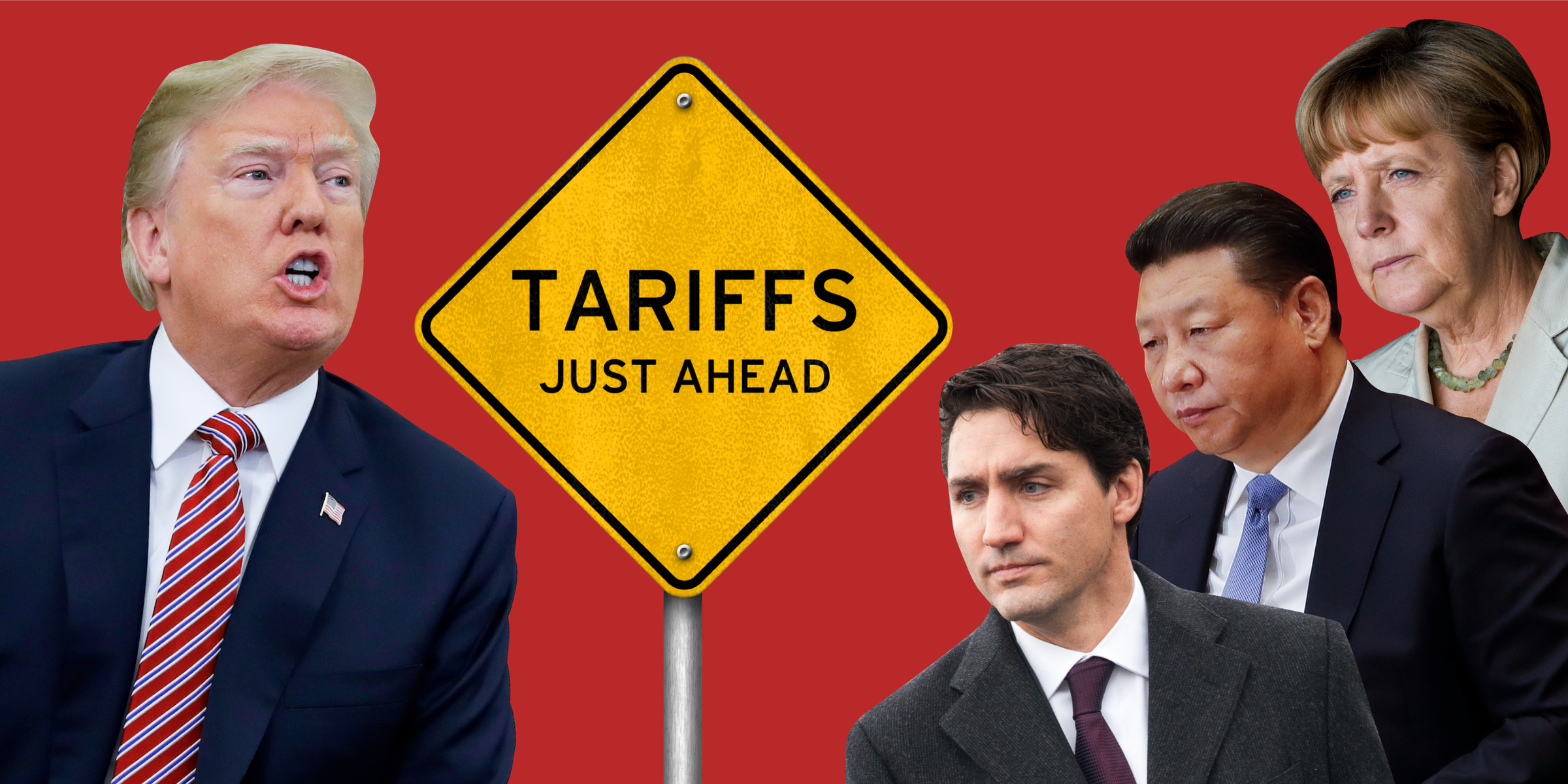Asian And Asian American Representation: Beyond Surface-Level Portrayals

Table of Contents
The Perpetuation of Harmful Stereotypes
The entertainment industry, and society at large, has long perpetuated damaging stereotypes that flatten the rich diversity of the Asian and Asian American experience. These harmful portrayals significantly impact individuals' self-perception, societal interactions, and opportunities.
The "Model Minority" Myth
The insidious "model minority" myth paints a picture of all Asians and Asian Americans as inherently intelligent, hardworking, and docile. This simplistic and inaccurate portrayal ignores the vast socioeconomic disparities within the Asian community.
- Harmful Impacts: This stereotype creates unrealistic expectations, placing immense pressure on individuals to conform to this idealized image. It can lead to internalized oppression and a reluctance to acknowledge struggles with mental health or economic hardship.
- Inter-Community Relations: The "model minority" myth fosters harmful comparisons between different racial groups, creating division and undermining the fight for racial justice for all. It deflects attention from the systemic inequalities faced by other minority groups.
- Silencing Effect: This myth silences discussions about the real struggles faced by many Asian Americans, such as discrimination in employment, housing, and education. It creates an environment where addressing inequalities is seen as unnecessary or unwarranted.
Hypersexualization and Fetishization
Asian women are frequently hypersexualized and fetishized in media, often portrayed as submissive, exotic, or perpetually available. This objectification reduces individuals to mere fantasies, stripping them of their agency and humanity.
- Examples in Media: From the "dragon lady" trope to the submissive geisha, harmful stereotypes continuously appear in film, television, and advertising. These images contribute to the normalization of sexual objectification.
- Impact on Mental Health: This constant portrayal significantly impacts self-esteem and mental health. Young Asian women internalize these images, leading to feelings of inadequacy and shame.
- Cultural Appropriation: The hypersexualization of Asian women often involves cultural appropriation, with costumes and imagery taken out of context and used for sexual purposes, further perpetuating harmful stereotypes.
The "Perpetual Foreigner" Stereotype
The "perpetual foreigner" stereotype casts Asian Americans as outsiders, no matter how long they or their families have lived in the country. This constant questioning of their belonging fuels feelings of otherness and marginalization.
- Examples in Everyday Life: Being asked where they are "really" from, facing assumptions about their language skills, or experiencing microaggressions based on their perceived foreignness are common experiences.
- Effect on Social Integration: This stereotype hinders social integration and creates barriers to building genuine connections with people from other backgrounds.
- Impact on Career Opportunities: The "perpetual foreigner" stereotype can affect career advancement and create obstacles in professional settings, undermining trust and credibility.
The Importance of Authentic and Diverse Representation
Moving beyond harmful stereotypes requires a fundamental shift toward authentic and diverse representation of Asian and Asian American communities. This means showcasing the vast spectrum of cultures, experiences, and identities within the Asian diaspora.
Showcasing the Diversity Within Asian Communities
The Asian community is not a monolith. It encompasses countless cultures and ethnicities, from South Asian to East Asian to Southeast Asian communities, each with unique histories, languages, and traditions.
- Diverse Asian Communities: Representations should accurately reflect the diversity of cultures, including Indian, Chinese, Korean, Japanese, Filipino, Vietnamese, and many more. Each group has distinct cultural narratives and should not be homogenized.
- Unique Cultural Aspects: Authentic representation requires showcasing the richness and complexity of each culture, avoiding generalizations and stereotypes. This includes accurate portrayal of religious practices, family structures, and social norms.
- Need for Diverse Representation: The media must reflect this diversity in storylines, characters, and creative teams to ensure accurate and meaningful representation.
Giving Voice to Underrepresented Groups
Marginalized groups within the Asian community, such as LGBTQ+ Asian Americans and disabled Asian Americans, often face compounded layers of discrimination. Their voices and experiences require amplified visibility.
- Struggles of Marginalized Groups: These groups face unique challenges related to both their ethnicity and their sexual orientation or disability. Their stories need to be told authentically and with sensitivity.
- Importance of Visibility: Visibility normalizes these experiences, challenges negative stereotypes, and empowers individuals to share their stories.
- Inclusive Storytelling: This requires actively seeking out and centering the narratives of these underrepresented groups, both in front of and behind the camera.
Representation Beyond the Screen
Authentic and diverse Asian and Asian American representation extends far beyond the entertainment industry. It is crucial in politics, education, and business, where role models and leadership are vital.
- Successful Asian Americans: Highlighing the achievements of successful Asian Americans in various fields – from science and technology to arts and politics – serves as inspiration and counters negative stereotypes.
- Mentorship and Leadership Opportunities: Providing mentorship and leadership opportunities to young Asian Americans is essential for their professional development and success.
- Positive Role Models: Positive role models are crucial for fostering self-belief and demonstrating the potential for achievement within the Asian community.
Strategies for Achieving Better Representation
Achieving meaningful change requires a multi-pronged approach encompassing increased opportunities for Asian American creatives, holding media accountable, and promoting media literacy.
Increased Opportunities for Asian American Creatives
To ensure authentic storytelling, media companies must actively create opportunities for Asian American writers, directors, producers, and actors.
- Successful Asian American Creatives: Showcasing the successes of Asian American creatives inspires future generations and demonstrates the talent within the community.
- Mentorship Programs: Mentorship programs provide guidance and support, nurturing the next generation of Asian American storytellers.
- Inclusivity in Media Companies: Media companies must actively foster an inclusive environment, ensuring diverse voices are heard at every level of production.
Holding Media Accountable
Consumers have the power to hold media accountable by actively supporting inclusive media, criticizing stereotypical portrayals, and advocating for better representation.
- Successful Campaigns: Highlight successful campaigns that have pressured media companies to change their practices and improve representation.
- Power of Social Media: Social media can be a powerful tool to raise awareness, organize boycotts, and amplify positive voices.
- Positive Reinforcement: Actively supporting media that showcases authentic and diverse Asian and Asian American representation is crucial for creating positive change.
Promoting Media Literacy
Educating audiences about the impact of media representation is key to fostering critical thinking and challenging harmful stereotypes.
- Educational Initiatives: Schools and community organizations can implement media literacy programs to help individuals critically analyze media messages and identify stereotypes.
- Critical Thinking Skills: Developing critical thinking skills empowers individuals to question media narratives and challenge biased portrayals.
- Media Awareness: Increased media awareness fosters a culture of informed consumption and encourages audiences to demand better representation.
Conclusion
The persistent underrepresentation and stereotypical portrayals of Asians and Asian Americans in media have far-reaching consequences, impacting individuals' self-perception, societal interactions, and opportunities. Achieving authentic and diverse Asian and Asian American representation requires a concerted effort from media companies, consumers, and educators. We must actively seek out and support media that accurately and respectfully portrays the richness and complexity of the Asian and Asian American experience. Share your experiences, discuss this issue with your friends and family, and demand better Asian and Asian American representation. The fight for accurate and respectful portrayal is ongoing, and your participation is crucial. Let’s work together to ensure that future generations see themselves reflected authentically in the media and beyond.

Featured Posts
-
 Could Henry Cavill Be The Next Wolverine In Marvels World War Hulk
May 12, 2025
Could Henry Cavill Be The Next Wolverine In Marvels World War Hulk
May 12, 2025 -
 The Silent Struggle Small Businesses And The Impact Of Trumps Tariffs
May 12, 2025
The Silent Struggle Small Businesses And The Impact Of Trumps Tariffs
May 12, 2025 -
 From Trump Administration To Crypto Russ Vought And Dogecoin
May 12, 2025
From Trump Administration To Crypto Russ Vought And Dogecoin
May 12, 2025 -
 Henry Cavills Unexpected Exit From The Witcher Impact On Sirens Of The Deep
May 12, 2025
Henry Cavills Unexpected Exit From The Witcher Impact On Sirens Of The Deep
May 12, 2025 -
 Akbr Mnh B 26 Eama Elaqt Twm Krwz Wana Dy Armas Mhl Tsawl
May 12, 2025
Akbr Mnh B 26 Eama Elaqt Twm Krwz Wana Dy Armas Mhl Tsawl
May 12, 2025
